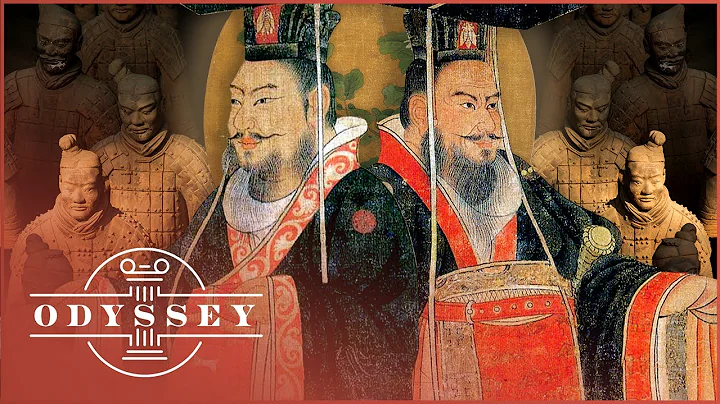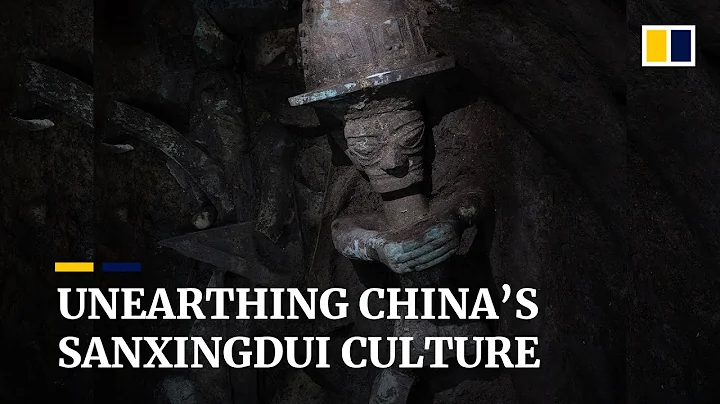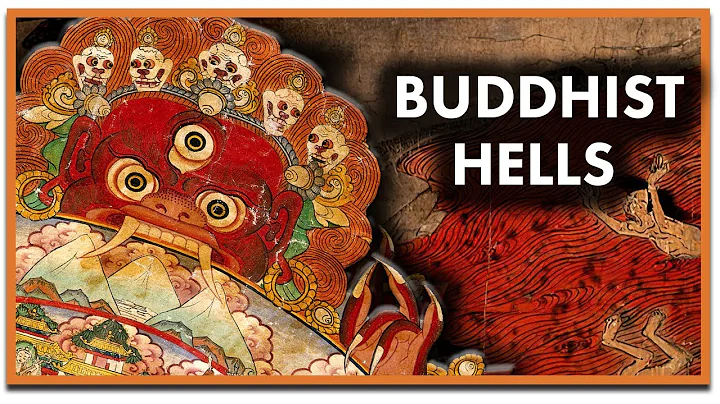[Hundreds of ancient buildings will help you understand ancient Chinese civilization]
On the northeast side of Taiyuan Wuyi Square, behind the former site of Shanxi University Hall , there is a quiet and quiet old street - Di Lianggong Street. The red walls, dark tiles, and locust trees along the street block out the sun, and the cicadas chirp like rain, full of ancient charm. The breeze blows, but you can hear the rustling of leaves, the jingling of iron horses on the temple eaves, and the sound of bells accompanied by curls of incense, lingering in the air for a long time... The thousand-year-old ancient Zen temple - Chongshan Temple is located in here. This ancient temple, hidden deep in the bustling city of Taiyuan, feels quite hidden in the city, solemn and unassuming.
Chongshan Temple is not only a Buddhist temple, but also an ancestral temple of the Zhu family dynasty. The last hall on the central axis, the Jinling Hall, is an ancestral temple without an emperor's seat, which is rare in the construction of Chinese Buddhist temples. Therefore, it enjoys more incense than the average temple.
![[Hundreds of ancient buildings help you understand ancient Chinese civilization] On the northeast side of Taiyuan May Day Square and behind the former site of Shanxi University Hall, there is a quiet and quiet old street - Di Lianggong Street. The red walls, dark tiles, and locus - DayDayNews](https://cdn-dd.lujuba.top/img/loading.gif)
Officially built a large temple to strive for grandeur
There are many theories about the origin of Chongshan Temple. Some say it was founded in the Tang Dynasty, originally named "White Horse Temple", and later renamed "Yanshou Temple"; some say it was originally called "Zongshan Temple", and later renamed "Chongshan Temple"; some say It is said that it was originally the palace of Emperor Yang of the Sui Dynasty, and later became a Buddhist temple.
According to the existing "Plaque of the Reason for Building the Temple" in the temple, in April of the 16th year of Hongwu in the Ming Dynasty (AD 1383), The third son of Emperor Taizu of the Ming Dynasty Zhu Yuanzhang specially invited Zhu Yuanzhang to repay Empress Gao for her "extremely hard work". En allowed to build a new temple, and in the 24th year of Hongwu (AD 1391), the Chongshan Temple covering an area of 245 acres was finally built. Since Chongshan Temple is a large official temple "approved" by Zhu Yuanzhang, and it has the nature of a family temple, it took a lot of financial resources to build it and strive to be grand.
There is a floor plan of Chongshan Temple drawn in the Ming Dynasty in the temple, which shows the grand style of that year. Chongshan Temple is built entirely in accordance with the standard palace-style architectural format. On the central axis, the King Kong Hall, the Heavenly King Hall, the Daxiong Hall, the Pilu Hall, the Dabei Hall, and the Jinling Hall are lined up from south to north. On the left and right sides of each main hall, there are a series of small courtyards neatly arranged. They are not only symmetrical, but also neat and uniform. This pattern is very similar to the layout of the main hall on the central axis of the Forbidden City in Beijing and the six east-west palaces.
From the perspective of its grand scale, spectacular momentum, exquisite craftsmanship, and gorgeous paintings, Chongshan Temple is a concentrated expression of the art of the Ming Dynasty. In addition to its eye-catching appearance, more importantly, it is also an ancestral temple of the Zhu family dynasty. People in the Ming Dynasty commented on it: "The scale of the temple is like a fairy palace. It is not only the best in Taiyuan, but also the first in the Jin Dynasty." "
Representative of Ming Dynasty official architecture
The existing Dabei Hall building and Buddha statues in Chongshan Temple basically retain their original appearance from the Ming Dynasty, and may be the earliest existing Ming Dynasty official architectural remains. It reflects the time and space tension between the traditions of the Song and Yuan Dynasties and the new system of and Hongwu , as well as between local craftsmanship and official architecture. At the same time, there is no shortage of personalized creations in the construction of religious spaces. It is a good way to study the architectural changes between the Yuan and Ming Dynasties. precious samples.
Unfortunately, Chongshan Temple caught fire in the third year of Tongzhi in the Qing Dynasty (1864 AD), and only the Dabei Hall and some ancillary buildings survived. In the seventh year of the reign of Emperor Guangxu of the Qing Dynasty (1881 AD), Zhang Zhidong, the governor of Shanxi, built the Confucian Temple on the ruins of Chongshan Temple. From then on, Chongshan Temple was divided into two.
The existing Chongshan Temple covers an area of nearly 3,000 square meters, which is a small part of the original temple size. It is composed of buildings such as the mountain gate, bell and drum tower, Dabei Hall, east and west wing rooms, and small courtyard.
The Hall of Great Compassion is more than 600 years old, 29 years earlier than the Hall of Supreme Harmony in the Forbidden City in Beijing, which was built in the 18th year of Yongle in the Ming Dynasty (AD 1420). The main hall is seven rooms wide and four rooms deep. It has double eaves on the top of the mountain. Under the upper eaves hangs the plaque "Dabei Hall". Under the lower eaves is the "Langhan Baoxiang" inscribed by Zhao Puchu. The four characters are dignified and vigorous.
Dabei Hall, from the beams and roof to the window lattice and partitions, are all original works from the Ming Dynasty. It is "the most complete and standard architectural example" of the Ming Dynasty in Shanxi and "a representative work of Ming Dynasty official architecture."
![[Hundreds of ancient buildings help you understand ancient Chinese civilization] On the northeast side of Taiyuan May Day Square and behind the former site of Shanxi University Hall, there is a quiet and quiet old street - Di Lianggong Street. The red walls, dark tiles, and locus - DayDayNews](https://cdn-dd.lujuba.top/img/loading.gif)
Copy of murals
![[Hundreds of ancient buildings help you understand ancient Chinese civilization] On the northeast side of Taiyuan May Day Square and behind the former site of Shanxi University Hall, there is a quiet and quiet old street - Di Lianggong Street. The red walls, dark tiles, and locus - DayDayNews](https://cdn-dd.lujuba.top/img/loading.gif)
Bodhisattva statues
Collection of Three Treasures Buddhist scriptures and copy clay sculptures
Chongshan Temple has three treasures, one is the Buddhist scriptures, the second is a copy of the murals, and the third is a Bodhisattva statue.
The first treasure is the Tibetan Sutra. The large number of Buddhist scriptures preserved here and the precious editions are rare in the country. The temple preserves the early precious editions in the history of woodblock printing in my country - "Chongning Wanshou Cang" in the Northern Song Dynasty and "Qisha Cang" in the Southern Song Dynasty. In addition, the Yuan version of the Tibetan Buddhist scriptures, namely the "Puning Tibetan" printed with private funds, is also preserved. There are 4,257 volumes in existence. In addition to the above-mentioned versions, there are also various Tibetan scriptures that were moved from other monasteries or places, such as the Ming version of the Tibetan scripture "Southern Tibetan" which was transferred from Zhongshiwanyuan in Taiyuan, and the "Northern Tibetan" which was transferred from Datong In the 1970s, the Tibetan Tripitaka, the stone rubbings of the Diamond Sutra, the Avatamsaka Sutra, the Lotus Sutra, and the Avatamsaka Sutra were photocopied from Japan in the 1970s. It is these Tibetan scriptures from different periods, different versions and different characteristics that make Chongshan Temple occupy an important position among Buddhist temples.
The second treasure is two sets of mural copies. One set is the "Picture of the Incarnation of the Buddha Sakyamuni", which depicts the story of Sakyamuni becoming a Buddha; the other set is "The Picture of the Fifty-Three References of the Good Fortune Boy", which depicts the good fortune boy's visit to the Buddhas. The story of studying the law. Although these two sets of copies are more than 500 years old, they are still as vivid as ever and are known as "gem paintings".
The third treasure is the three Buddha statues. These three Buddha statues are all clay statues of Bodhisattvas gilded with gold, and were made during the Hongwu period of the Ming Dynasty. In the middle is the image of Avalokitesvara Bodhisattva with Thousand Arms and Thousand Eyes ; on the left is the image of Samantabhadra Bodhisattva , and on the right is the image of Manjusri Bodhisattva with Thousand Arms, Thousand Bowls and Thousand Shakyas . The three standing statues are all about eight meters high. They have beautiful figures, kind faces and kind eyes, and are graceful and noble, making them feel approachable and respectable. These three Buddha statues have unique shapes and exquisite carvings. They are treasures of our country's sculpture art.
The beauty of the ancient architecture of the thousand-year-old city
Taiyuan is a national historical and cultural city with a history of 5,000 years of civilization and more than 2,500 years of city construction. It has been known as the "Splendid Taiyuan City" since ancient times. The long history has left Taiyuan with many places of interest. . Yingze District is the most beautiful area in Taiyuan and a place rich in culture. It is picturesque and picturesque everywhere.
During this year's "China Tourism Day", in order to allow tourists to systematically and comprehensively experience Taiyuan culture, Yingze District has specially launched 15 high-quality tourist routes "Millennium Fucheng·Shou Shan Yingze ". The "Ethnic and Religious Integration Tour" is recommended as a key route. It is inclusive of culture and broadens horizons, reflecting the ancient charm of the national historical and cultural city. Chongshan Temple is one of the recommended attractions on this route.
In addition to exploring the ancient architecture and ancient charm, Yingze District has leveraged Zhonglou Street to seek development and focused on promoting the quality improvement and transformation of the service industry. The long-gestating "cultural and tourism integrated business district" has taken shape, with the service industry as the core. Yingze District, an industrial base, has once again burst out with new vitality. For the integrated development of cultural and tourism businesses, Yingze District has already laid the groundwork. In 2019, it launched a boutique tour of Fucheng, relying on Chunyang Palace, Confucian Temple, Chongshan Temple, the former site of Provincial No. 1 Middle School and other cultural and historical sites, connecting food streets, Business districts such as Bell Tower Street and Liuxiang allow tourists to experience the authentic and unique cultural charm. Thanks to such generous efforts, Chongshan Temple has also taken advantage of the opportunity to sublimate. The ancient buildings and cool fashion colors allow tourists to see its different beauty. (Author Lu Ya, the pictures are all information pictures except for the signature)









![State Building in SONG CHINA [AP World History Review—Unit 1, Topic 1] - DayDayNews](https://i.ytimg.com/vi/Wc1YgOeVEwI/hq720.jpg?sqp=-oaymwEcCNAFEJQDSFXyq4qpAw4IARUAAIhCGAFwAcABBg==&rs=AOn4CLCOylND3eIzgsu8eYn_WqlOGDPE_w)







![[English] Who Am I - Lecture 1 - Ven. Guan Cheng - DayDayNews](https://i.ytimg.com/vi/KU0fUs2It5o/hq720.jpg?sqp=-oaymwEcCNAFEJQDSFXyq4qpAw4IARUAAIhCGAFwAcABBg==&rs=AOn4CLDFpQUN_QwRfC7bmP4sUadq-RcYdg)
![A Moving Masterpiece 清明上河图 [English narration] - DayDayNews](https://i.ytimg.com/vi/kxff-4GktOI/hqdefault.jpg?sqp=-oaymwEcCOADEI4CSFXyq4qpAw4IARUAAIhCGAFwAcABBg==&rs=AOn4CLBtHGLeUpJNCYDJYnZTuISQ1N5Vag)


